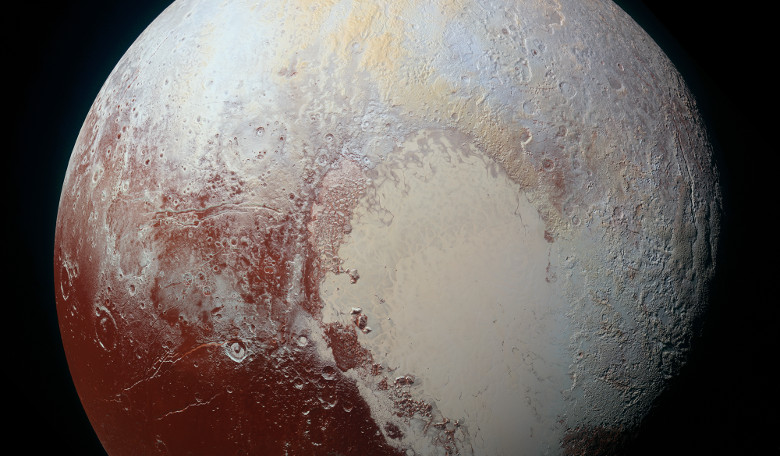What makes a planet a planet and not a dwarf planet? Or a moon for that matter? Controversy surrounding the downgrading of Pluto’s status to that of a dwarf planet has never really subsided since its demotion in 2006 and now one scientist is determined to change how we think about Pluto and other small bodies such as Europa by redefining what it means to be a planet.
Kirby Runyon from Johns Hopkins University, along with six colleagues from five institutions will present a proposed new definition of "planet," and a justification for that definition at the upcoming Lunar and Planetary Science conference which is being held this week in Texas.
Runyon and his co-authors argue that the definition of "planet" should also focus on the intrinsic qualities of the body itself, rather than just the external factors such as its orbit or other objects around it. Pluto, for example which although has a diameter only a fifth of the Earth and is smaller than the Moon, "has everything going on, on its surface that you associate with a planet. ... there's nothing non-planet about it,” says Runyon.
Indeed the New Horizons mission which passed within 8,000 miles of Pluto and sent back the first close-up images ever made of the [dwarf] planet, showed stunning surface features including what could be the tell-tale signs of a sub-surface ocean.
Consequently Runyon and colleagues want to define a planet as "a sub-stellar mass body that has never undergone nuclear fusion" and that has enough gravitational heft to maintain a roughly round shape. The round shape also includes any bulges at the equator caused by a three-way squeeze of forces from its own gravity, coupled with the influence of both a star and a nearby larger planet.
If the International Astronomical Union (IAU) were to accept a new geophysical definition such as this to classify objects, then the number of planets in our Solar System would jump from eight to approximately 110!
At present, the IAU’s definition of what makes a planet a planet states that a body must orbit the Sun, it must be massive enough for its own gravity and it requires that the body has "cleared the neighborhood" around its orbit, meaning it has become gravitationally dominant.
This latter criteria is what proved to be the downfall of Pluto and other trans-Neptunian objects, as Pluto is constrained in its orbit by the gravity of Neptune and it shares its orbital neighbourhood with Kuiper belt objects.
But, based on that last aspect it could be reasoned that the IAU definition also excludes Earth, Mars, Jupiter and Neptune too, as they share their orbits with asteroids. This is a point co-author of the definition S. Alan Stern, and the principal investigator for the New Horizons mission, has argued in the past.
So what is the likelihood of this new proposal taking hold and becoming the standard for how to define a planet? Well, the new definition would not require approval from a central governing body, and it has already been adopted by Planet Science Research Discoveries, an educational website founded by scientists at the University of Hawaii at Mānoa.
Perhaps we will now see a dichotomy between how astronomers and geologists define a planet as Runyon’s proposal is more useful to planetary scientists and as many are closely affiliated with geology and other geosciences, this new geophysical definition is more useful in these fields than the IAU's astronomical definition.
Would having a 102 ‘new’ planets stimulate interest in Solar System exploration? Runyon, who is finishing his doctorate this spring, thinks it would. As the very word "planet" seems to carry a "psychological weight," he reasons that more planets could encourage that public interest. And that can only be a good thing, right?
"I want the public to fall in love with planetary exploration as I have," Runyon said. "It drives home the point of continued exploration."











